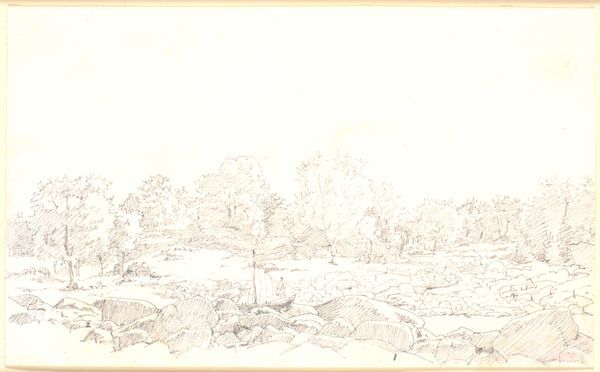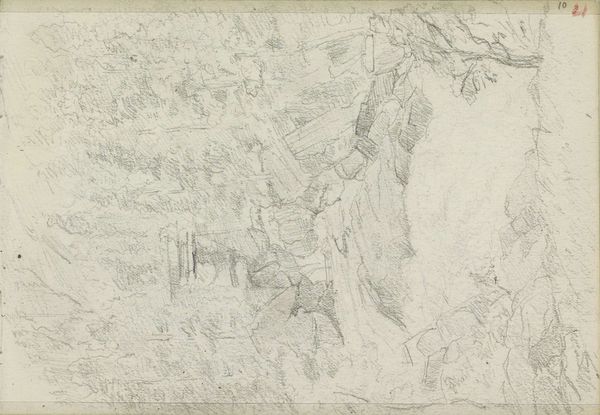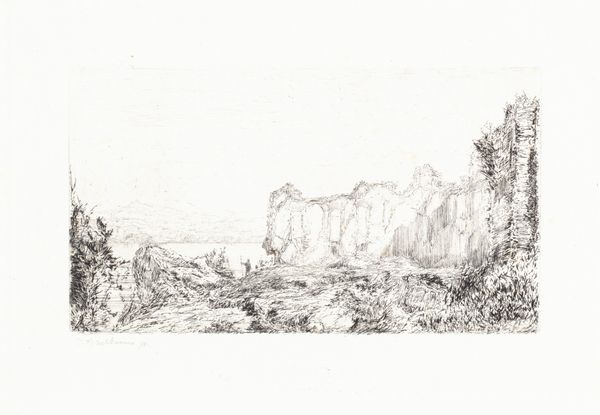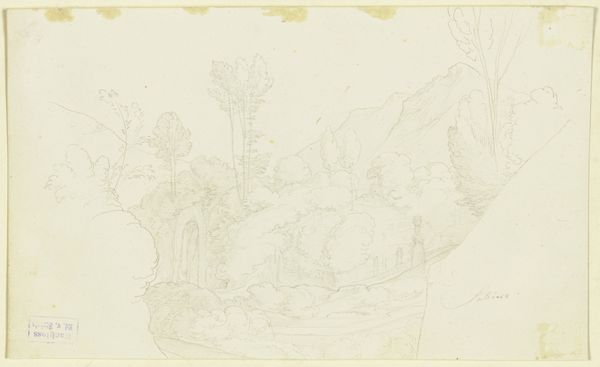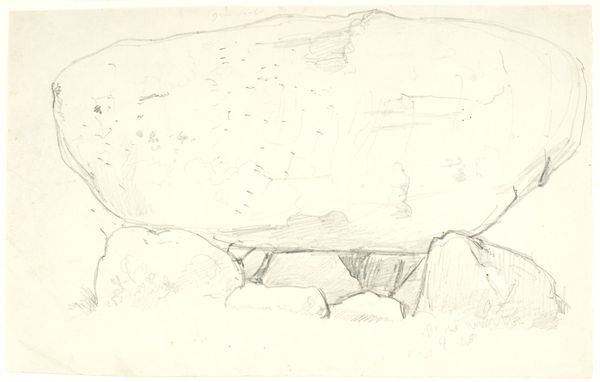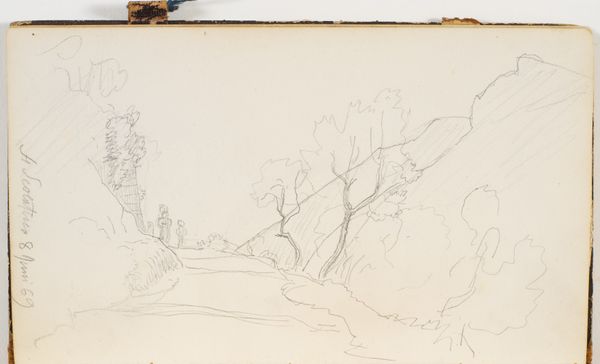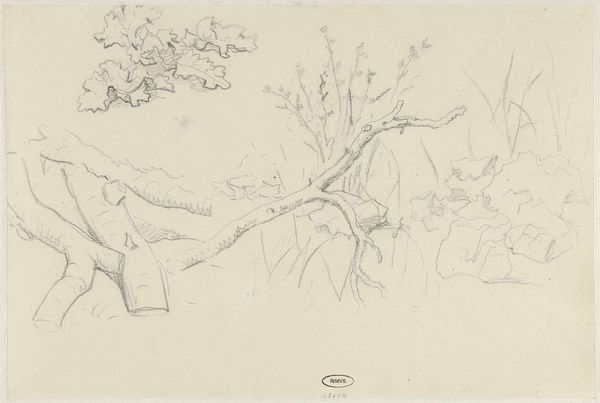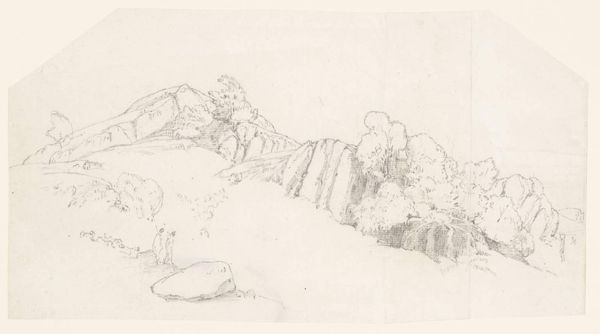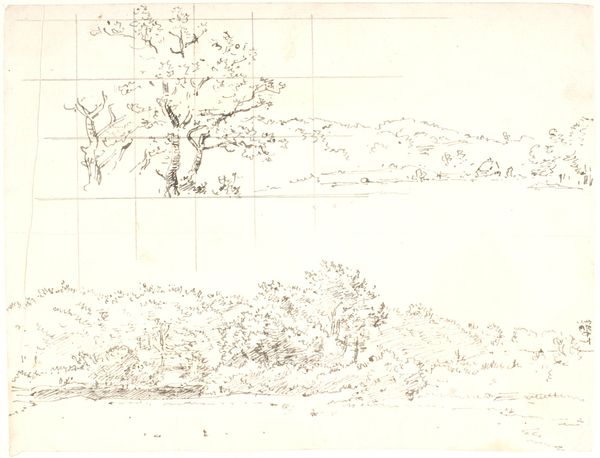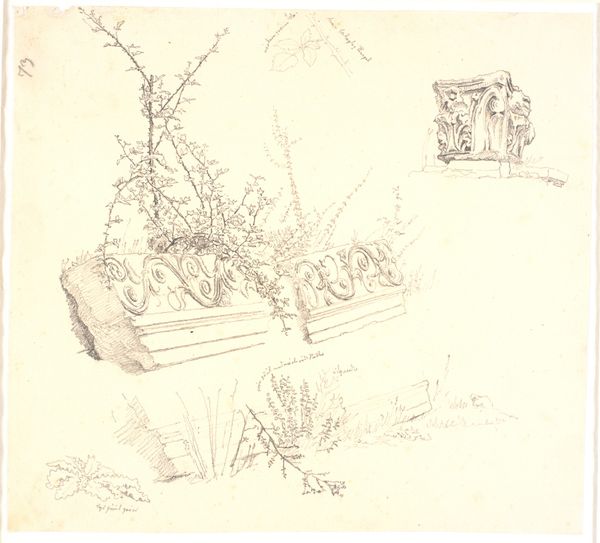
drawing, pencil
#
drawing
#
ink drawing
#
landscape
#
romanticism
#
pencil
Dimensions: 97 mm (height) x 176 mm (width) (bladmaal)
Editor: So, this is "Landskab med Hammershus ruiner," made sometime between 1810 and 1848 by Christen Købke. It’s a pencil and ink drawing, a landscape depicting some ruins. There's a certain delicate quality to it, almost like a faded memory. What's your interpretation of it? Curator: Well, considering its time, this drawing resonates with Romantic ideals. The ruin is fascinating. We need to ask, why ruins? Hammershus, for Købke’s audience, spoke to Denmark’s past, a past fraught with political strife and shifting national identity. Was it perceived as a symbol of a lost golden age or a challenge for national revival after the Napoleonic wars? Editor: That's a good point, ruins definitely carry symbolic weight. So, choosing this specific ruin could be seen as a statement? Curator: Precisely. Købke's choice highlights the complicated relationship between nation, history, and visual culture. And what of its accessibility? Was this intended for public display or private contemplation? Editor: Possibly private, it's such a simple work on paper and has the quality of a study. That suggests personal reflection rather than a grand public statement. Curator: Exactly. Therefore, we can infer this piece serves as more than just topographical record. What cultural conversations was Købke engaging in through this private study of Hammershus? Editor: I hadn't thought about it that way – it's interesting to consider what messages an artist might embed in even a seemingly simple sketch like this. Curator: Yes, uncovering that cultural dialogue provides a much richer context for experiencing the artwork, doesn't it? I'm eager to learn more!
Comments
No comments
Be the first to comment and join the conversation on the ultimate creative platform.

